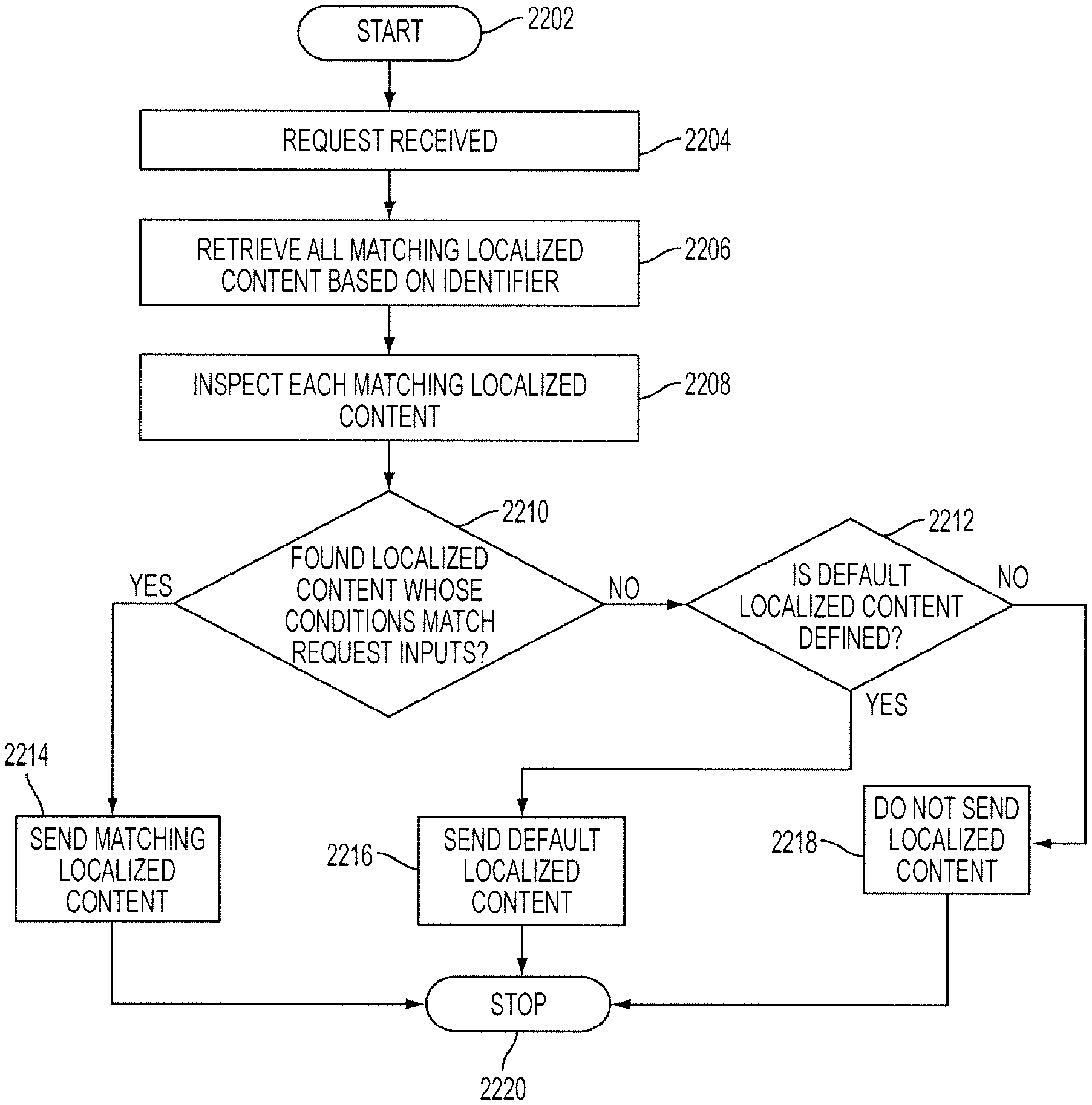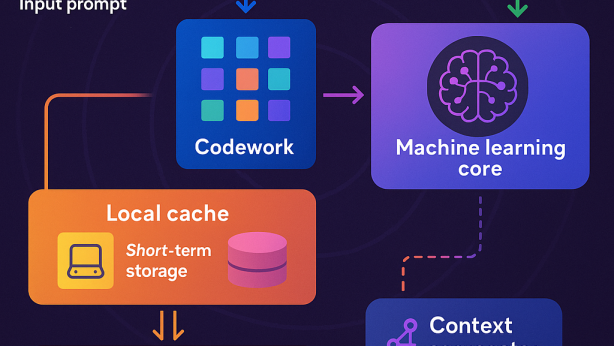Invention for Dynamic Language Translation of Web Site Content

Invented by Enrique Travieso, Eugenio Alvarez, Charles Whiteman, Adam Rubenstein, Collin Birdsey, MotionPoint Corp
Dynamic language translation is the process of automatically translating web site content from one language to another in real-time. This allows businesses to reach a wider audience and communicate with customers who speak different languages. Dynamic language translation is particularly important for e-commerce websites, as it allows businesses to sell their products and services to customers all over the world.
The market for dynamic language translation of web site content is expected to grow significantly in the coming years. According to a report by MarketsandMarkets, the global language translation software market is expected to reach $9.5 billion by 2022, growing at a CAGR of 13.7% from 2017 to 2022. This growth is driven by the increasing demand for translation services in various industries, including e-commerce, healthcare, and legal.
One of the key drivers of the market for dynamic language translation is the increasing globalization of businesses. As more companies expand their operations globally, they need to be able to communicate with customers in different languages. Dynamic language translation allows businesses to do this quickly and efficiently, without the need for human translators.
Another driver of the market is the increasing use of artificial intelligence (AI) and machine learning (ML) in language translation. AI and ML technologies are being used to improve the accuracy and speed of language translation, making it more efficient and cost-effective for businesses.
The market for dynamic language translation is also being driven by the increasing use of mobile devices. As more people use mobile devices to access the internet, businesses need to be able to provide mobile-friendly websites that are available in multiple languages. Dynamic language translation allows businesses to do this, making it easier for customers to access their products and services on the go.
In conclusion, the market for dynamic language translation of web site content is growing rapidly, driven by the increasing globalization of businesses, the use of AI and ML technologies, and the increasing use of mobile devices. As businesses continue to expand globally, dynamic language translation will become increasingly important in helping them communicate with customers in different languages.

The MotionPoint Corp invention works as follows
Methods and systems for providing content on a website. If the request contains information about a user, a request for content will be received. If the request includes information about a user, one or more pieces of localized material associated with at most one condition are retrieved. Each localized content has been localized in relation to the content requested. When the information about the user matches the associated condition, at least one of the retrieved locally retrieved content will be identified. As a response to the content request, the identified localized content will be sent.

Background for Dynamic Language Translation of Web Site Content
Internet and the world-wide internet have made it possible for consumers to transact business with individuals or organizations located on different continents, from the convenience of their desk. In an increasingly global marketplace, it is becoming imperative for businesses/organizations to provide web site content in multiple languages in order to expand their customer base beyond their home countries. It is also important to communicate in the native language with potential and existing customers as well as customers, especially when a country’s demographic changes to include speakers of foreign languages. Many large U.S. retailers announced that they are now making it a priority to serve the Hispanic market. A few U.S. retailers have hired Hispanic advertising agencies to market to the Hispanic segment in Spanish.
An organization looking to translate its website to another language has had the option of several options. Each one has significant drawbacks. One technique involves purchasing machine translation technology. Although machine translation can sometimes be useful for determining the meaning of web content, it is not ideal. This type of translation is not feasible for most companies. The quality of the machine-translation is just not good enough to post on their websites.
Another technique is to manage the translation process by employing human translators. This can be done either by maintaining multiple websites for each language or re-architecting existing web sites back-end technology in order to accommodate multiple languages. This takes significant time and costs, as well as a high degree of complexity and duplication of effort. E-commerce and dynamic sites pose additional challenges, since the information that needs to be translated is located in multiple places (e.g., a Structured Query Language Database, static Hypertext Markup Language pages, and dynamic Hyper TextMarkup Language page templates), and each site interfaces with the same ecommerce or back end engine. It is also important to properly manage ongoing maintenance as web sites change. This approach can produce high-quality translations that are appropriate for large companies’ websites, but it comes at a significant cost. Many organizations don’t have the necessary resources or are unwilling to invest in them.
For example, FIG. 1. (PRIOR ART) A block diagram that illustrates the system architecture for a traditional web site. FIG. 1. is presented in English as the first language. FIG. FIG. 1 shows a connection between a web server 112 and the Internet 116 using a web connection. Public user 118 is a user who has access to the internet 116 via a web connection. They can download information from the web server 112. Programming logic 110 is used to operate the web server 112, which contains instructions for how to retrieve, serve and accept information for processing. The web server 112 also has access to a database 101 for storing information. It also has access to Hyper Text Markup Language’s (HTML) template files, graphics files, 106, and multimedia files. These files make up the web site that is served by web server 112.
FIG. “FIG. FIG. The web site of FIG. 2 is presented in two languages: English (as shown above). 1) or in a second language such as Spanish. FIG. FIG. 2. shows the web server 112 along with the English language components. 1 includes the database 102, HTML, templates files 104, graphics 106, multimedia 108, and programming logic 110. FIG. FIG.
FIG. 2. also contains components that allow you to provide web content in Spanish. FIG. FIG. 2 (has Spanish language components. It includes a database of information, HTML templates files 214, graphics file 216, multimedia files 218, and programming logic 212. This Spanish language component is managed by the multi-lingual content manager (206), which handles requests for information in both languages. FIG. FIG. 2 shows that the web server 112 has been re-engineered in order to deliver multiple content sets in different languages.
As you can see in FIG. 1. and FIG. 2 and FIG. 2. requires significant effort and resources. The deployment also requires the re-engineering of the web server 112, which adds to the cost and time involved in the deployment. Also, once the Spanish language components have been established, constant synchronization with the changes in English language components will result in a recurring expense.
There is therefore a need to solve the problems in the prior art discussed above.
Briefly”: In accordance with the present instruction, disclosed are a system, method, and computer-readable medium that can be used to provide localized content for a website.
In one example, the method is implemented on a computer with at least one processor, storage and a communication platform to provide localized content for a website. If the request contains information about a user, a request for content will be received. If the request includes information about a user, one or more pieces of localized material associated with at most one condition are retrieved. Each localized content has been localized in relation to the content requested. When the information about the user matches the associated condition, at least one of the retrieved locally retrieved content will be identified. As a response to the content request, the identified localized content will be sent.

In another example, a process, implemented on a machine having at least one processor and storage. It also includes a communication platform to manage localization of content relative to a webpage. The location of a webpage is identified so that the content intended to be displayed can be localized. Each version of localized content can be provided. Each version is localized to the original content intended to be displayed at that location. Each localized version is associated with one or several conditions that allow the localized content to be retrieved and replaced by the original content. So that localized content can be retrieved later, when one or more of the conditions is met, the one or more localized versions with the associated conditions for the content originally intended are saved.
In another example, a method implemented on a computer with at least one processor, storage and a communication platform to manage content localization relative to a website. One or more web pages can be used to localize content. Each location generates one or more pieces localized content. Each piece of localized information is associated with at minimum one condition. The localized content for each condition is stored. To facilitate future retrieval, each piece of localized information is associated with the respective location on the webpage.
In another example, a method implemented on a computer with at least one processor, storage and a communication platform to provide localized content relative to a website. Received information about a user and a specific location on the webpage. A portion of the localized content that is associated with the page’s location is retrieved. The user’s information is matched with the identified piece of localized content. As a result, the identified localized content will be sent to the user as a reply to their information.
Additional benefits and novel features will also be described in part in this description. These will become apparent to skilled art-workers upon inspection of the following and the accompanying drawings. Or, they may be learned through the production and operation of the examples. You can realize the benefits of the present teachings by practicing or using the various methodologies, instruments and combinations discussed in the following examples.
The methods, systems and medium disclosed in accordance to the present teaching overcome problems with prior art by providing an effective and simple-to-implement system as well as a method for dynamic translation of web sites.
Overview
FIG. “FIG. FIG. 3. The web site shown in FIG. FIG. FIG. 3 shows how the web server 112 can be connected to the Internet116 via a Web connection. The web server 112 may be accessed by the Internet 116. A public user 118 can download information from the web server 112. To connect to the website of via the network 116, the user 118 can use a client program, such as a browser, on a computer. The user 118 can browse the web site’s products and services by connecting to it.
In this example, web server 112 is controlled by programming logic 110. The web server also has access to a data base 102, HTML template files, graphics files, 106, and multimedia files. These files are the English components of web site 112.
FIG. “FIG. The main functions of the current teaching may be carried out by the translation server 300, which could include the provision of a website in a secondary language such as Spanish. The translation server 300 can provide secondary language components to a base website, which are provided by web server 112. It does not require integration with the base site or re-configuring of the web server 11.2.
As you can see in the differences between FIG. 2. FIG. 3. The deployment of the secondary languages components FIG. 3. This deployment requires significantly less time and resources than FIG. 2. In this example, FIG. The deployment of FIG. 3 doesn’t require the re-engineering or modification of the web server 112. The translation server 300 will establish the secondary language components. They are then automatically synchronized with English language components on the base website. The present system reduces the time, effort, and resources required to create a secondary language website.

FIG. “FIG. FIG. FIG. 4 shows an alternative view of the system architecture in the present teaching. FIG. FIG. 4 shows a website 414 that represents a site in English and is connected to the Internet 412 through a web connection. FIG. FIG. 4. 4 shows another user 416 who uses a web connection to Internet 412 in order to browse and navigate web pages hosted by the website 414.

Click here to view the patent on Google Patents.


